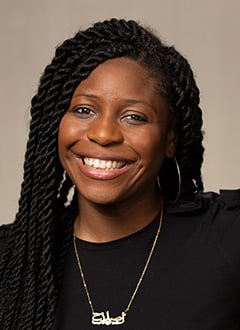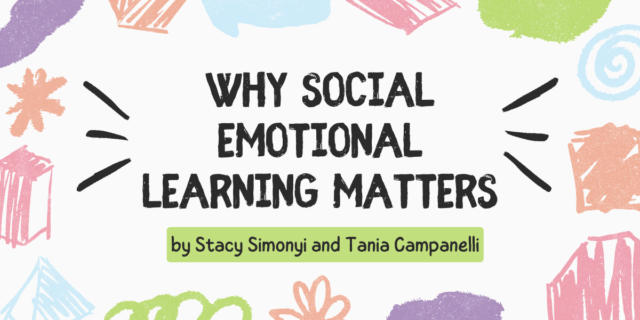
While our teaching environments have changed drastically over the past eight months, our values have remained and carried us through these challenging times. Nonetheless, finding creative ways to infuse those values into remote instruction can be a challenge. Islah Tauheed, a 5th grade Bronx, New York teacher and Heinemann Fellow alum, shares her experience in building online community, and using it as a tool to foster conversations about racial equity and justice.
While our teaching environments have changed drastically over the past eight months, our values have remained and carried us through these challenging times. Nonetheless, finding creative ways to infuse those values into remote instruction can be a challenge. Islah Tauheed, a 5th grade Bronx, New York teacher and Heinemann Fellow alum, shares her experience in building online community, and using it as a tool to foster conversations about racial equity and justice.
…
This school year is unlike any we’ve had before as the pandemic has pushed us into virtual spaces. However, we still need to make sure that the primary focus in our classrooms is creating environments where children feel safe. That safe space is a place where learners can take risks and engage in conversations that may come up around the topics of race and equity.
Oftentimes I get questions from other early childhood educators about whether the children are too young to handle these discussions and my answer is absolutely not! Especially when we create a climate and culture that promotes inclusivity. This is the exact situation I found myself in at the end of the last school year with my 2nd grade class, which prompted me to create Ms. Tauheed and Friends.
Once a week, I set aside time for a special class meeting called Ms. Tauheed & Friends where I had guest speakers come to visit the virtual classroom. Our theme of these meetings was “how can little people make a big change?” And there we talked about everything from urban farming and anxiety to cooking and race. Using guest speakers has many benefits but this is what I found most helpful:
1) Engagement –If you’re a lower grade teacher, you know that students notice anything new, and a seeing a new face is no exception. They are hooked in right away!
2) Amplifying unheard voices–Inviting guests into your classroom is a way to promote the BIPOC in your community who may not get heard from often, which is especially poignant if you are a white teacher. Think of it like a celebrity endorsement. You are the teacher and the children look up to you! So if you’re bringing in a guest, they must be important. However, be sure that “because I said so” validation is not where it ends. Let students know that you’re introducing these guests because they are experts on their topic. During these meetings, you are sharing your power. You’re no longer the holder of all the knowledge in the room. Sharing your platform with others which is an important action for students to see.
3) Challenging biases -Be very purposeful in who your guests are. All of my guests were of various ethnicities and religions. It was crucial to challenge typical stereotypes and offer representation so students know that Black people and POC hold a wide variety of roles. Students are now given a chance to imagine themselves in these roles as they got older. It’s also validation for student’s reality and lived experiences. I invited a woman who ran a Mexican restaurant in the neighborhood to show us how to cook salsa with traditional Mexican cookware. One of my other guests was a Muslim woman in hijab who ran a goat farm. Another of my guests was a nurse on who was a Black male. It was very important for me to show the students Black men living and thriving and healing during a time where they may have consuming so many images of black trauma and black death. Lastly when I did feature a white guest, it was to introduce the concept of ally ship to students and what it looks like to be actively anti-racist.
So how do we do this?
Well, you want to first think about the students in front of you and what they need. The topics can vary! I had an author on and we talked about how writing can be empowering. I had a therapist on and we talked about ways to self soothe. Think about your students and what they need in this moment. Next, keep it short and sweet! If you teach young people, you know that you have X amount of time before everyone is showing you their loose teeth. Try the following format: review old topic, introduce new one, guest speaks, Q&A until the questions die down. If you do any type of writing keep it brief! One strategy is to use songs as timers. I would time it with a song and once that song ended, the writing was over. Unfinished work could be completed after class with the assurance the finished product would be posted on the class online platform. Lastly, be brave. Kids can sense your discomfort. Get comfortable about the topic. If you can say the words ‘black’ and ‘white’ and ‘ally’ and ‘racist’ without cringing, the kids will feel comfortable talking about it too.
This school year holds many challenges but as educators we can find a way to confront them in community.
Have a safe and heathy school year!
-Islah Tauheed
 Islah Tauheed is a courageous advocate for teachers. She works toward change by creating spaces where young people can let their guard down, express their true selves, and experience freedom as learners. She is currently a 5th grade teacher in the Bronx, NY, where she integrates a variety of curriculums and projects that reflect the diverse background of students in the school community. Islah is a graduate of Teachers College, Columbia University and a former Heinemann Fellow.
Islah Tauheed is a courageous advocate for teachers. She works toward change by creating spaces where young people can let their guard down, express their true selves, and experience freedom as learners. She is currently a 5th grade teacher in the Bronx, NY, where she integrates a variety of curriculums and projects that reflect the diverse background of students in the school community. Islah is a graduate of Teachers College, Columbia University and a former Heinemann Fellow.


